Anglers Booking Team
The expert copywriters at Anglers Booking have meticulously crafted this article. Our dedicated team of writers provides valuable insights and information to enhance your angling experience.
 8 minutes read
8 minutes readUnder our radar today is Crappie. For many anglers, fishing for this species is a favorite activity. These fish inhabit ponds, rivers, and lakes and are available year-round. This fish often moves in schools. It is important to mention that Crappie change depth with the seasons. However, sometimes they are hard to find. But don't worry, this article has a lot of answers.
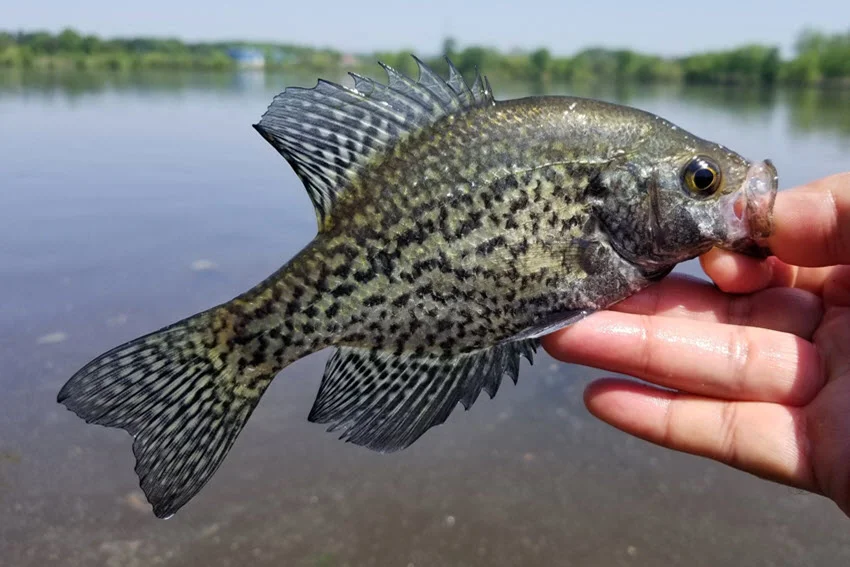
For success, you must have an effective lure. Knowing which one is the best in different conditions could make a big difference in how many Crappie you catch and have more fun on the water. The best lures look like small baitfish or bugs. You also need to fish at the proper depth and speed. Today, we will give advice on which lures work best and how to use them.
Crappie are intelligent and sensitive fish. To catch them, it is important to understand them. Here we are providing all the essential information about this fish species to help you maximize your success on your next fishing trip. Be sure to read the sections below so you don't miss anything important!
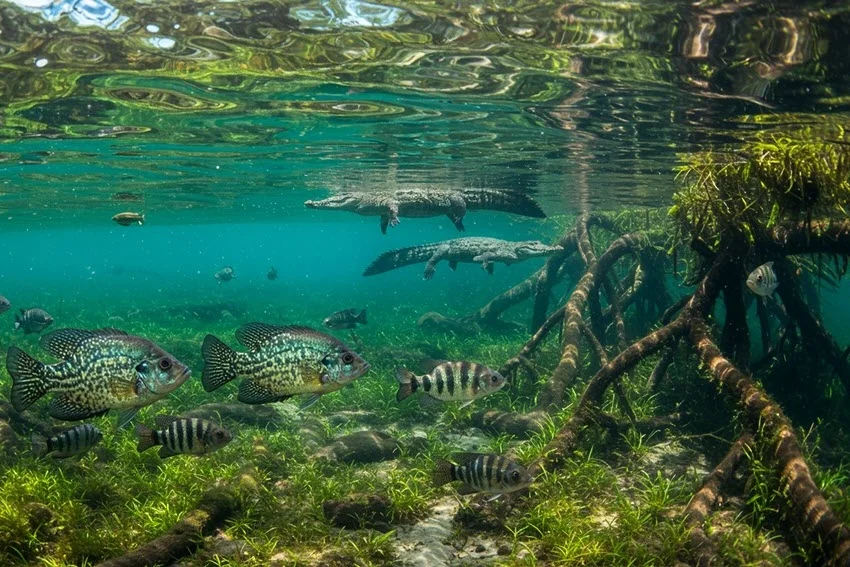
Crappie live in lakes, rivers, and reservoirs. You often find them near brush piles, fallen trees, and docks. They like calm water and stay close to cover for safety.
They swim in schools. In spring, they head toward the shallow areas. In summer and winter, they go deeper, looking for stable water temperatures. In the fall, they feed more to prepare for cold weather.
Crappie feed most during low-light hours. They often rise to strike prey from below. That's why your lure should stay just above their level. Their location can change during the day, depending on light and water conditions. In busy areas, they may move away from pressure and noise.
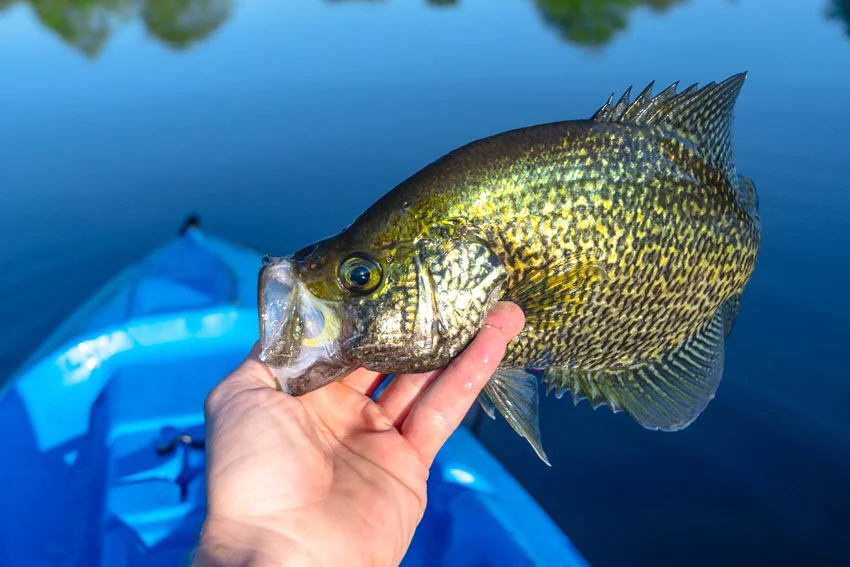
As the season changes, the Crappie's behavior also changes. Now, we will analyze their seasonal behavior in detail. We will also cover the best time to fish.
Knowing how they behave each season helps you find the right spot, choose the best Crappie baits and lures, and make your fishing more fun and more successful.
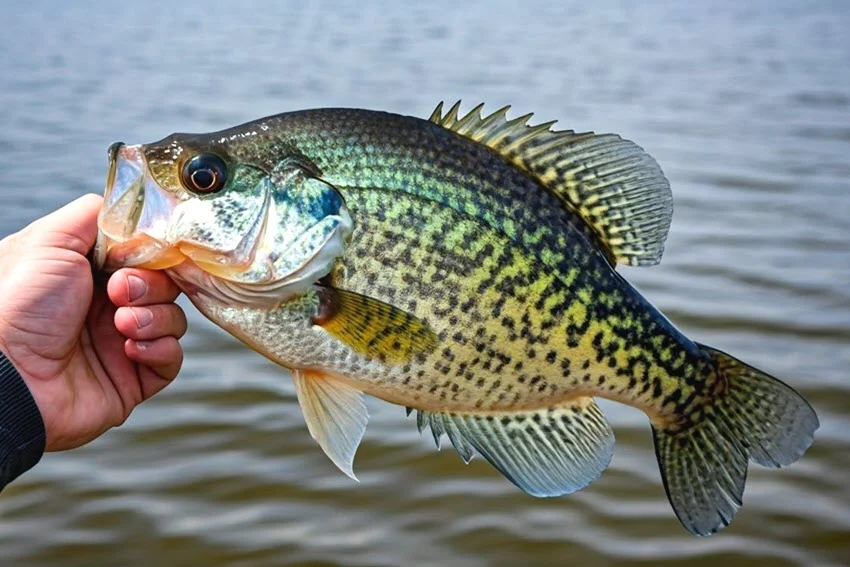
These fish live in freshwater and often stay close to cover. You don't need a boat, but it helps you reach more spots. Crappie like structures.
Fishing smart means knowing where Crappie hide. Also, you need to know which lure is suitable for a specific place. When you learn where Crappie like to hide and how they move, you will catch more fish with less effort.
When fishing for Crappie, it is important to remember they have small mouths. That means you need to use small lures for the best results. Here are the most popular and effective lure types for Crappie fishing.
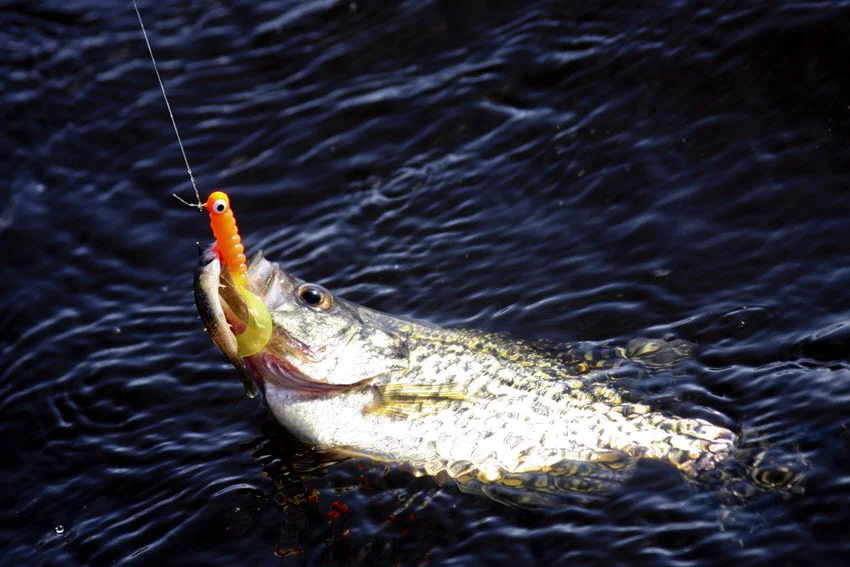
Jigs are one of the best lures for Crappie, as they allow you to fish right over the school of fish. Crappie usually strike from below, so placing a jig just above them works great. You can use jigs with soft plastic bodies or fly-style jigs with feather tails. Using a fish finder helps you find the proper depth and catch many fish in one spot.
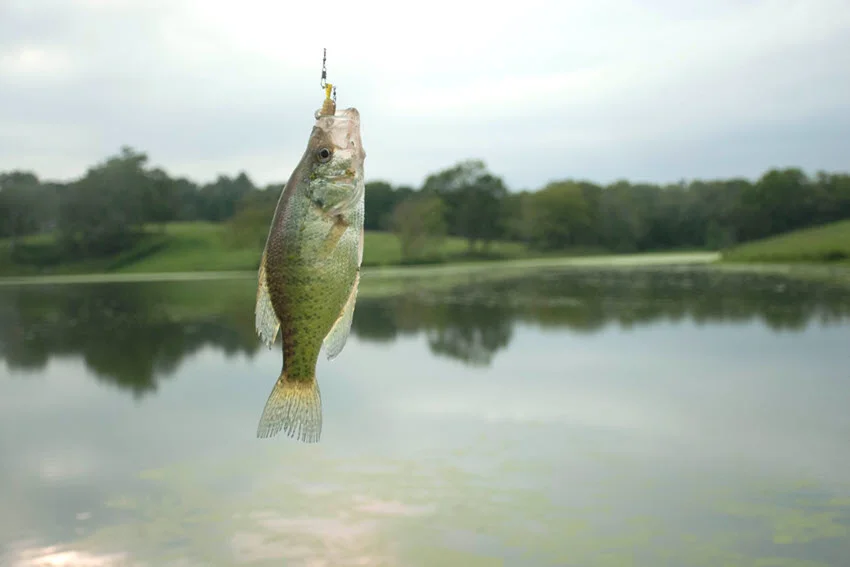
Small jerkbaits, about 1/16 ounce and less than 2 inches long, work well for Crappie. They are good, especially during spawning when Crappie are aggressive. Fish the jerkbait with short twitches and pauses. Be ready because big Crappie can strike hard.
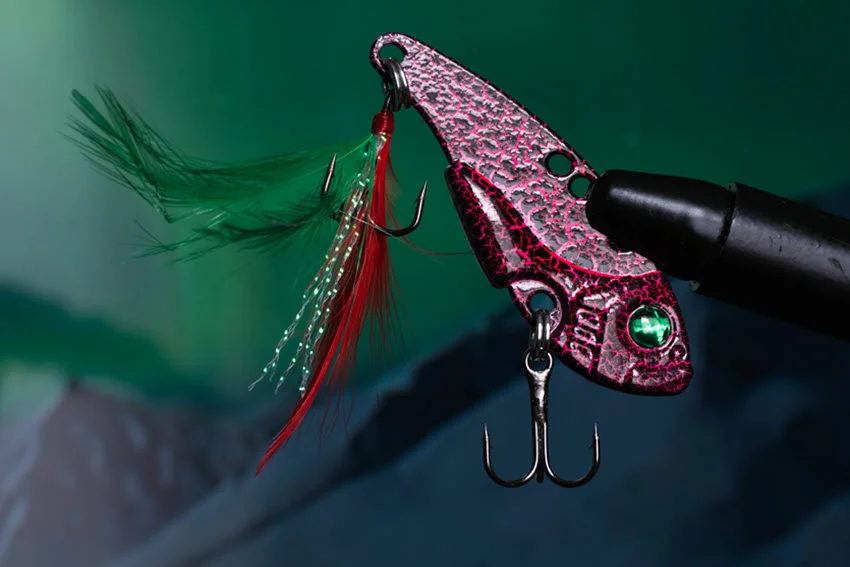
Small crankbaits work similarly to jerkbaits and can be trolled through schools of fish. If you find a good spot, trolling crankbaits in circles helps catch many Crappie. When fish are hard to find, trolling across a wider area can help locate them. Test a few depths and colors to see what the Crappie likes.
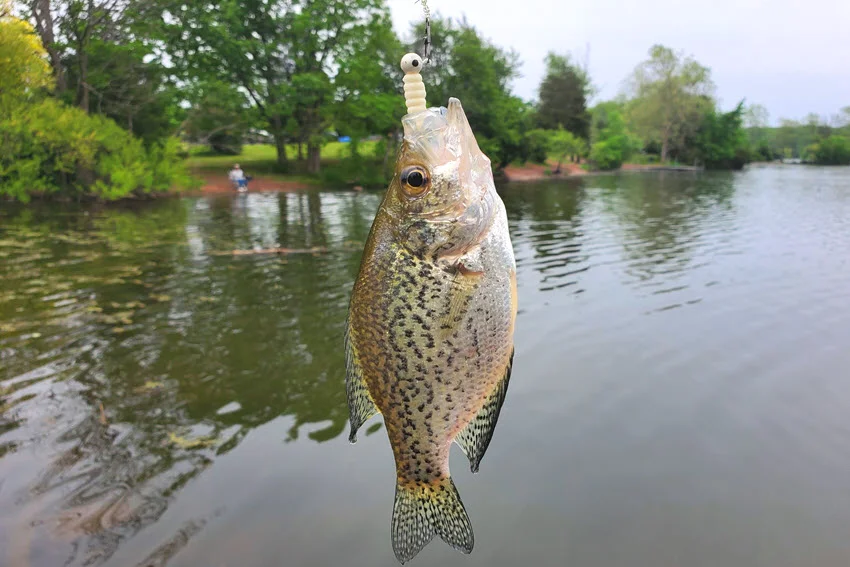
Soft plastic lures look and move like real minnows, worms, or crayfish. They are very versatile and can be rigged in many ways. Adding a soft plastic to a jig hook is popular, but you can also rig it Texas-style or under a bobber. Many softbaits have characteristic scents. That attracts Crappie. They are easy to carry and can be fished in any water.
Crappie are popular because they give a fun fight. To catch them, anglers use different fishing methods. Below, we present proven techniques that work well for Crappie fishing.
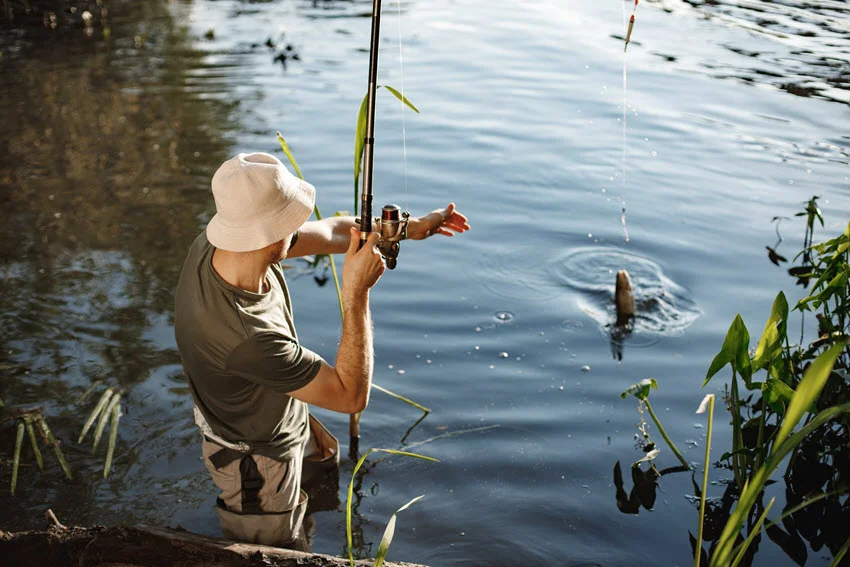
Use a small jig, with or without a soft plastic body. Drop it beside brush piles, docks, or standing timber and let it fall on a semi-slack line. Work gently lifts and pauses so the jig glides and falls naturally. Most strikes happen on the drop, so watch your line. Vary depth in small steps until you mark the school. This method shines year-round for suspended or tight-to-cover Crappie.
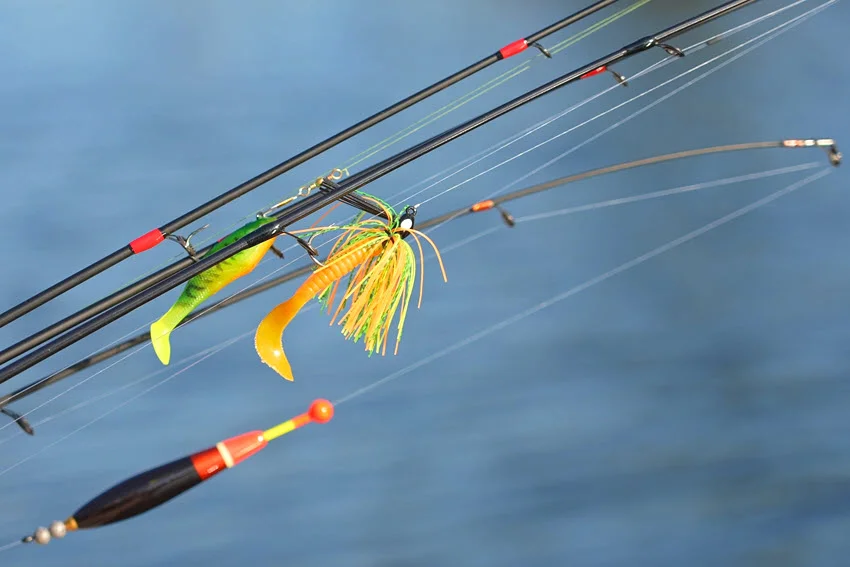
Cast soft-plastic lures near cover, such as docks, weeds, or fallen trees. These are spots where Crappie like to hide. Here, it waits for food. Use a slow retrieve. You can add small twitches to make the lure look alive. Soft plastics move like bugs (or small fish), which Crappie prefer to eat. This technique is productive to use while fishing from shore or a boat, especially in spring and fall.

Trolling with small crankbaits helps you cover more water and find Crappie faster. This is useful when the fish are scattered or hard to locate. Go slowly so the lure moves naturally. Change the depth often to see where the Crappie are hiding. Try different colors too, especially in dirty or clear water. This method works best in lakes and large rivers where Crappie move in schools.
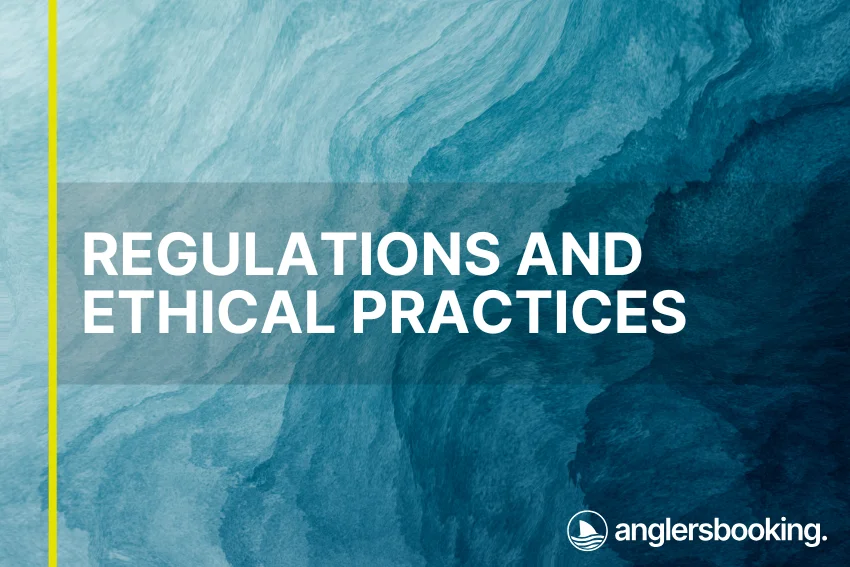
Understanding fishing regulations and ethical practices about specific fish species protects fish populations and ecosystems and promotes responsible angling practices.
Anglers Booking Team
When fishing for Crappie, you must respect the rules. Many areas have limits on the number of Crappie you can catch each day. Some places close fishing during the fish's spawning season to protect them.
Be gentle with the fish when you catch it. Before touching, your hands must be wet to avoid damaging their natural coating. When you want to release it, do that slowly and carefully. Help them swim away safely. It is recommended to use barbless hooks. It makes it easier to remove the hook without causing damage. If you decide to keep the Crappie, do so quickly and humanely.
Regulations may change depending on where and when you fish. Following these rules is essential to help keep Crappie healthy.
Crappie fishing is fun for everyone. It's great for all types of anglers. To catch more fish, learn where Crappie hide and how they move in each season. Use small lures, such as jigs, soft plastics, and crankbaits. These work well and make fishing more fun.
Crappie bite best in the early morning. Also, evening fishing could be productive. They change depth when the water warms or cools. Be patient and fish slowly. Look near brush piles, docks, and weeds. These are good places to find Crappie. With the effective gear, you will have fishing success. Try different lures and have fun catching Crappie!
Now it's your turn. What was the biggest Crappie that you caught? Which lure was the most productive? We are happy to see your answers!

The expert copywriters at Anglers Booking have meticulously crafted this article. Our dedicated team of writers provides valuable insights and information to enhance your angling experience.
Embark on unforgettable fishing adventures with us at Anglers Booking.
book your charterOctober 17, 2025
October 15, 2025
October 10, 2025
October 11, 2025
October 4, 2025
September 29, 2025
September 25, 2025
September 21, 2025

You're now part of our exclusive community. Get ready for premium content and updates straight to your inbox.
close
Subscribe to our newsletter and receive a selection of cool articles every week.
Please enter a valid email address.

Be the first to know when we're back in action.
Please enter a valid email address.
Leave a Comment
Your email address will not be published. Required fields are marked *
Thank you for your comment! It has been submitted for review and will appear on the site shortly.